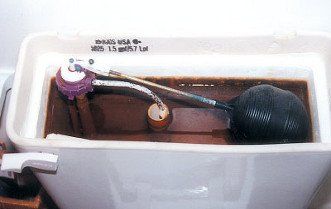Start your free evaluation today!
203.272.6017
1.800.628.6891
Refer A Friend for a $25 giftcard
MANGANESE
Manganese in Drinking Water
Manganese is a mineral that naturally occurs in rocks and soil and is a normal constituent of the human diet. It exists in well water in CT as a naturally occurring groundwater mineral, but may also be present due to underground pollution sources. Manganese may become noticeable in tap water at concentrations greater than 0.05 milligrams per liter of water (mg/l) by imparting a color, odor, or taste to the water. However, health effects from manganese are not a concern until concentrations are approximately 10 times higher.
The CT Department of Public Health (DPH) recently set a drinking water Action Level (AL) for manganese of 0.5 mg/l to ensure protection against manganese toxicity. This AL is consistent with the World Health Organization guidance level for manganese in drinking water. The CT AL provides guidance for prudent avoidance of manganese concentrations of potential health concern. Local health departments can use the AL in making safe drinking water determinations for new wells, while the homeowner makes decisions regarding manganese removal from existing wells.
What Health Effects can Manganese Cause?
Exposure to high concentrations of manganese over the course of years has been associated with toxicity to the nervous system, producing a syndrome that resembles Parkinsonism. This type of effect may be more likely to occur in the elderly. The new manganese AL is set low enough to ensure that the potential nervous system effect will not occur, even in those who may be more sensitive. Manganese is unlikely to produce other types of toxicity such as cancer or reproductive damage.
Is Manganese of Particular Concern for Young Children?
Yes, and especially so for bottle-fed infants. Certain baby formulas contain manganese, and if prepared with water that also contains manganese; the infant may get a higher dose than the rest of the family. In addition, young children appear to absorb more manganese than older age groups but excrete less. This adds up to a greater potential for exposure in the very young. Since manganese's effects on the developing nervous system have not been adequately studied, it is especially prudent for pregnant women and young children to have drinking water that is below the manganese AL.
How Do I know if I have Manganese in My Water?
You may suspect that manganese is in your water if the water is discolored (brownish-red), causes staining of plumbing fixtures (faucets, sinks) or clothing, or has an off-taste or odor.
How Else Can I be exposed to Manganese?
Manganese is a common trace element in the diet, with the amount of dietary exposure typically outweighing that which comes from drinking water. It should also be noted that manganese is added to some dietary supplements leading to even greater exposures for those taking such supplements. When water concentrations exceed 0.5 mg/l, the contribution from water becomes significant and put you at an increased health risk. Bathing and showering in manganese-containing water does not increase your exposure since manganese doesn't cross the skin or get into the air.



